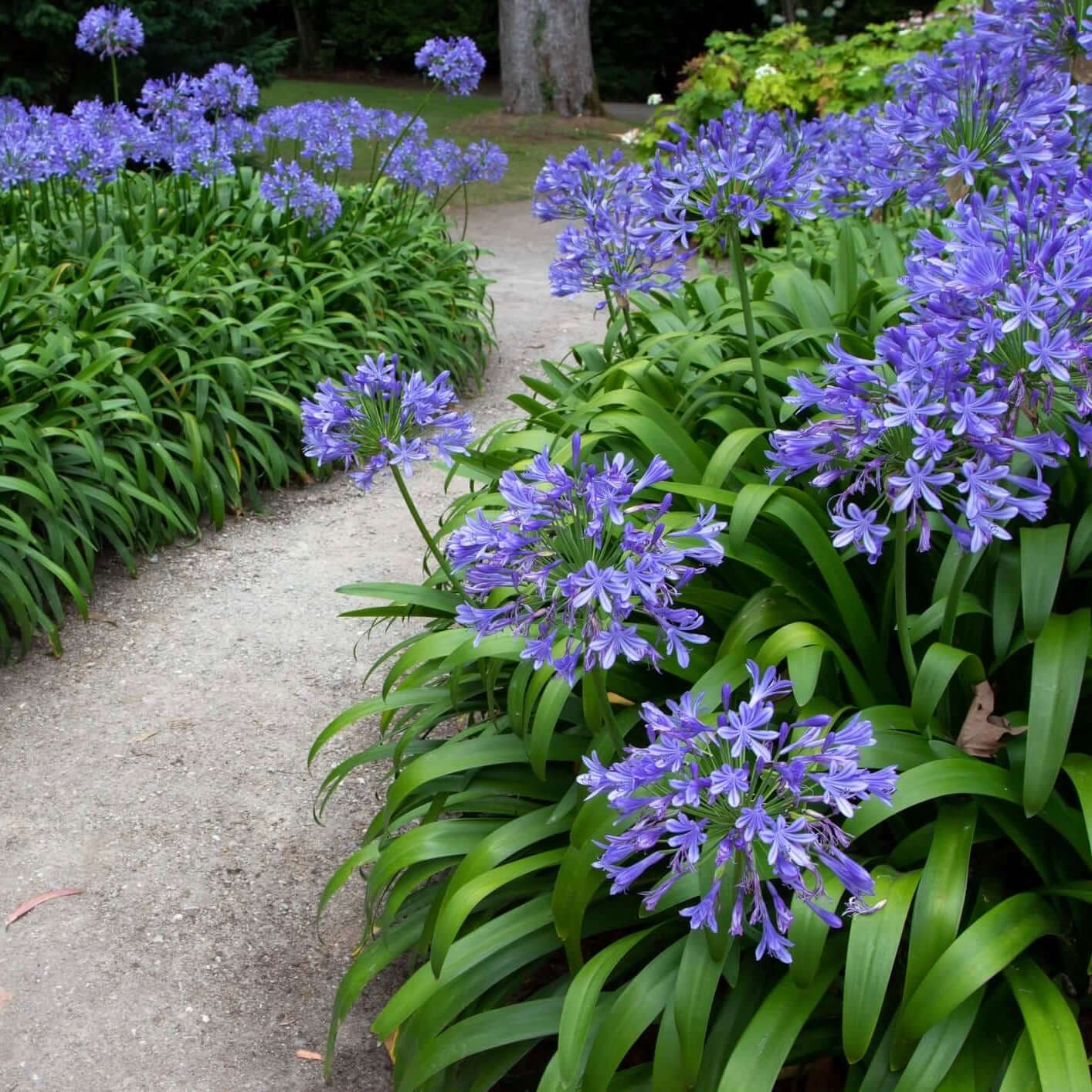Agapanthus Care Tips for Lush and Vibrant Flowers
Agapanthus Care Tips for Lush and Vibrant Flowers
Blog Article
Unleashing the Secret to Successful Agapanthus Growing: Idea for a Flourishing Garden
In the world of gardening, growing agapanthus effectively calls for a strategic technique that encompasses different aspects of plant treatment. By understanding the subtleties of agapanthus farming, one can create an atmosphere where these plants grow and bloom abundantly.
Growing Agapanthus: Ideal Practices
When planting Agapanthus, proper soil preparation is crucial for making sure effective development and development of these stunning blossoms. Agapanthus, commonly called Lily of the Nile or African lily, grows in well-draining soil with a somewhat acidic to neutral pH degree - Agapanthus. Prior to growing, it is essential to modify hefty clay soils with raw material such as compost or peat moss to improve drain and offer necessary nutrients for the plants
To grow Agapanthus, select an area that obtains full sunlight to partial shade, as this will promote healthy and balanced development and abundant blooming. Dig an opening two times the size of the plant's origin ball and position the Agapanthus at the exact same depth it was previously expanding. Gently backfill the hole with soil, pushing down firmly to get rid of any kind of air pockets around the origins.
Water the newly planted Agapanthus thoroughly and continue to keep the soil uniformly damp, particularly during the plant's active expanding period. Agapanthus. Using a balanced plant food once a month can better sustain the plant's development and flowering. By following these best practices for growing Agapanthus, you can develop a magnificent display screen of these fascinating flowers in your garden
Ideal Soil Conditions for Agapanthus
For optimal growth and growing success of Agapanthus plants, making certain the dirt conditions are perfect is essential. Agapanthus thrives in well-draining dirt with a somewhat acidic to neutral pH level varying from 6.0 to 7.0. This kind of soil permits ample water drain, avoiding waterlogging which can lead to root rot. To improve soil drain, consider including organic issue such as garden compost or peat moss when preparing the planting website. In addition, Agapanthus likes soil that is abundant in nutrients, so integrating a well balanced plant food during the expanding season can advertise healthy development and vivid blossoms.

Watering and Fertilizing Tips
To ensure healthy and balanced development and dynamic blooms, proper watering and feeding methods are important for successful Agapanthus farming. Agapanthus plants benefit from regular watering, specifically throughout the growing period.
When it pertains to fertilizing Agapanthus, a well balanced plant food with equal components nitrogen, phosphorus, and potassium can be applied in the springtime to advertise healthy development and flowering. Slow-release plant foods are suitable for offering nutrients gradually over an extensive period. Stay clear of over-fertilizing, as this can cause excessive vegetation growth at the expenditure of flowers.
Additionally, integrating raw material like garden compost into the soil can improve nutrient levels and enhance dirt structure, helping in the total health and wellness of the Agapanthus plants. By adhering to these watering and fertilizing pointers, gardeners can guarantee their Agapanthus plants flourish and generate spectacular screens of blossoms.
Pruning and Deadheading Techniques
Correct pruning and deadheading methods play a crucial role in keeping the health and visual appeals of Agapanthus plants, enhancing the vital practices of watering and feeding for effective cultivation. Pruning Agapanthus entails removing spent blossom heads, dead or yellowing fallen leaves, and general shaping of the plant to advertise better development. Deadheading, the procedure of getting rid of discolored blossoms, not just improves the plant's look but likewise urges more blooming.
When deadheading Agapanthus, it is recommended to snip off the flower stem at the base utilizing sharp, tidy shears. This procedure reroutes the plant's energy from seed production back into root and vegetation growth, promoting a basics much healthier and extra durable plant. Regular deadheading can extend the flowering period of Agapanthus and stop self-seeding, which can bring about congestion.
In terms of pruning, Agapanthus normally take advantage of a light trim after blooming to clean the plant and urge fresh development. Cutting down the invested blossom stems and removing any dead or damaged foliage helps keep the plant's vitality and general look. Nevertheless, it is vital to prevent cutting into the crown of the plant, as this can deteriorate its wellness.

Protecting Agapanthus From Vermins and Diseases
Implementing reliable pest and disease administration techniques is crucial to securing the health and vitality of Agapanthus plants in farming. One common bug that impacts Agapanthus is the Agapanthus borer, a caterpillar that passages into the plant, triggering damage to the blossoms and leaves.
In enhancement to pests, Agapanthus are susceptible to diseases such as root rot and fungal leaf spots. By staying attentive and resolving parasite and condition concerns immediately, gardeners can help their Agapanthus thrive and flourish.

Conclusion
To conclude, effective cultivation of agapanthus calls for appropriate planting methods, excellent dirt conditions, appropriate watering and fertilizing, normal pruning and deadheading, and defense from conditions and pests. By following these methods and suggestions, garden enthusiasts can make sure a flourishing garden loaded with lovely agapanthus blooms. Agapanthus. Keep in mind to keep regular care and interest to information to advertise the health and durability of these magnificent plants
When growing Agapanthus, proper dirt prep work is crucial for making explanation sure successful development and growth of these stunning blossoms.Water the newly planted Agapanthus thoroughly and continue to maintain the dirt evenly damp, specifically during the plant's energetic growing season.For ideal development and blooming success of Agapanthus plants, guaranteeing the soil conditions are perfect is important. When planting or transplanting Agapanthus, ensure the soil is well-prepared to supply the essential foundation for the plants to establish themselves successfully. One typical bug that influences Agapanthus is the Agapanthus borer, a caterpillar that passages into the plant, causing damage to the leaves and flowers.
Report this page